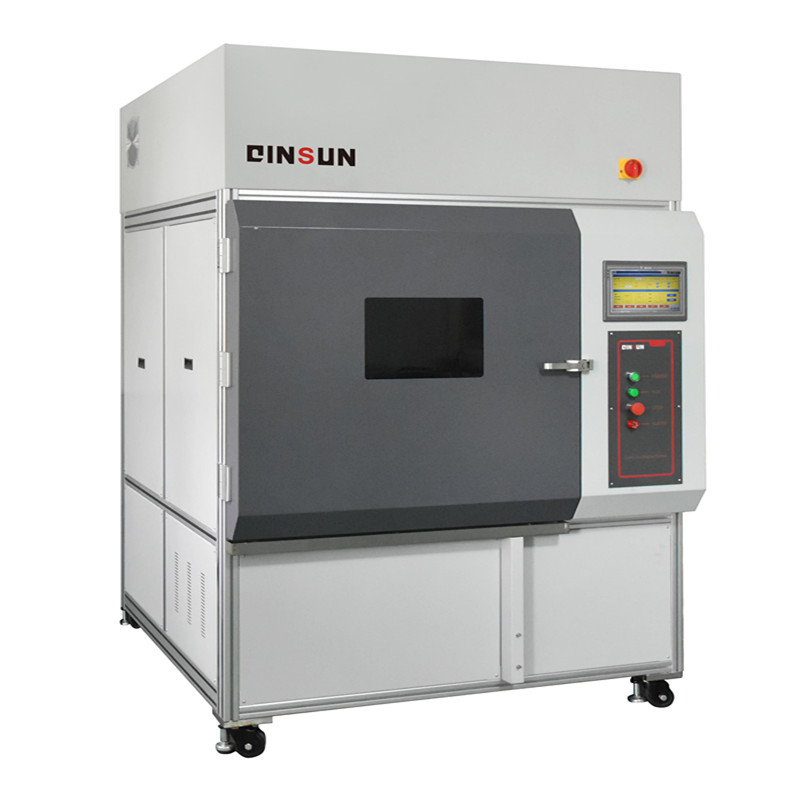Leak detection method of Si4000 xenon lamp aging tester

Si4000 xenon lamp aging tester uses the internal core component of xenon lamp tube to simulate the full sunlight spectrum, simulates the aging law of materials under different environmental conditions, evaluates the weather resistance of materials and products through experiments, and is used in many industries. However, during long-term use, some faults will occur, such as leakage. The R&D technical engineer of Shanghai Qianshi Precision Electromechanical Technology Co., Ltd. mainly introduces the six-step leak detection of the xenon lamp aging test box, hoping to help every customer.
Shanghai Qianshi Precision Electromechanical Technology Co., Ltd. was established in 2012, focusing on the research and development, design, and production of textile testing instruments, providing textile testing instruments and services for academic research units and testing institutions. Shanghai Qianshi is currently one of the most competitive R&D textile testing instrument manufacturers in China. The R&D team is composed of a group of experienced engineers. We are committed to serving customers wholeheartedly and striving to promote the technological innovation of textile testing instruments.

Leak detection method:
Cold system pressure leak detection: This method is easy to find leaks in the exposed part of the refrigeration system, and then find internal leaks. If the refrigeration system is not leaked by nitrogen, it can be judged that the refrigeration system has dirty training.
Freezer leak detection: Open the overhaul cover on the back of the test chamber, there is a low-pressure pipe and a capillary to the upper low-temperature chamber. Weld the low-pressure pipe and capillary connection, seal one end of the capillary, connect the welded interface of the low-pressure pipe to a 5mmx30mm copper tube, and connect one end to a three-way valve (with a 2.4kg pressure gauge). If nitrogen is pressed in, it means that the low-pressure evaporator is leaking nitrogen.
Evaporator internal leakage: The low-pressure pipe and capillary welded at the rear inspection port of the xenon lamp aging test chamber, and the low-pressure pipe and capillary welded on some copper pipes. The compressor maintenance uses a low-pressure end-face connection, and a 5 300 mm copper tube is used for welding. The other end is connected to a three-way repair valve (with a 2.4kg pressure gauge). If nitrogen is added to the system to maintain pressure, the freezer evaporator, the exposed part of the compressor condenser, the filter, the solenoid valve, and the capillary are tightened, indicating that the pressure is maintained normally. If nitrogen leaks, it needs to be welded in time.
Refrigeration cycle leak detection: The cryogenic box evaporator is composed of two parts, so the internal leakage should be checked twice. First, remove the tin foil on the back of the BCD203B against the lower left tube box. There are two low-pressure copper pipe welding heads inside. Seal the welding heads by hand, weld the copper pipe joints, take out the BCD203B first, then connect the lower left tube box, and two low-pressure copper pipe welding heads, seal the welding heads by hand, and then install quick connectors on the two copper pipe ports from top to bottom.
Fill the two quick connectors (or three-way valves) with 1MPa compressed dry nitrogen to see if the pressure gauge drops. If the pressure drops below, the greenhouse evaporator is leaking internally.
When performing pressure detection, pay attention to changes in ambient temperature. If the ambient temperature drops, the pressure cannot maintain constant pressure.
2024-11-18 11:01

